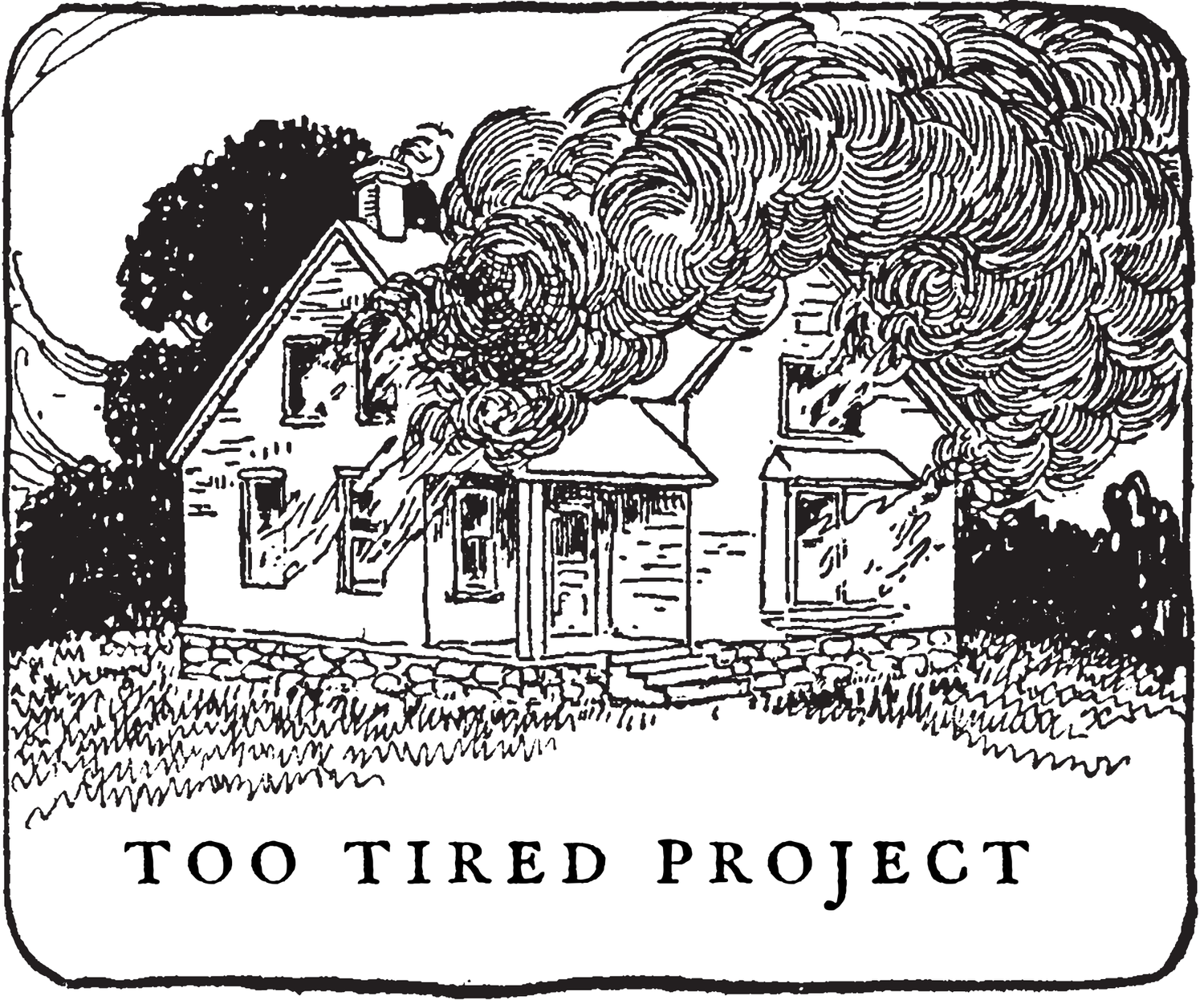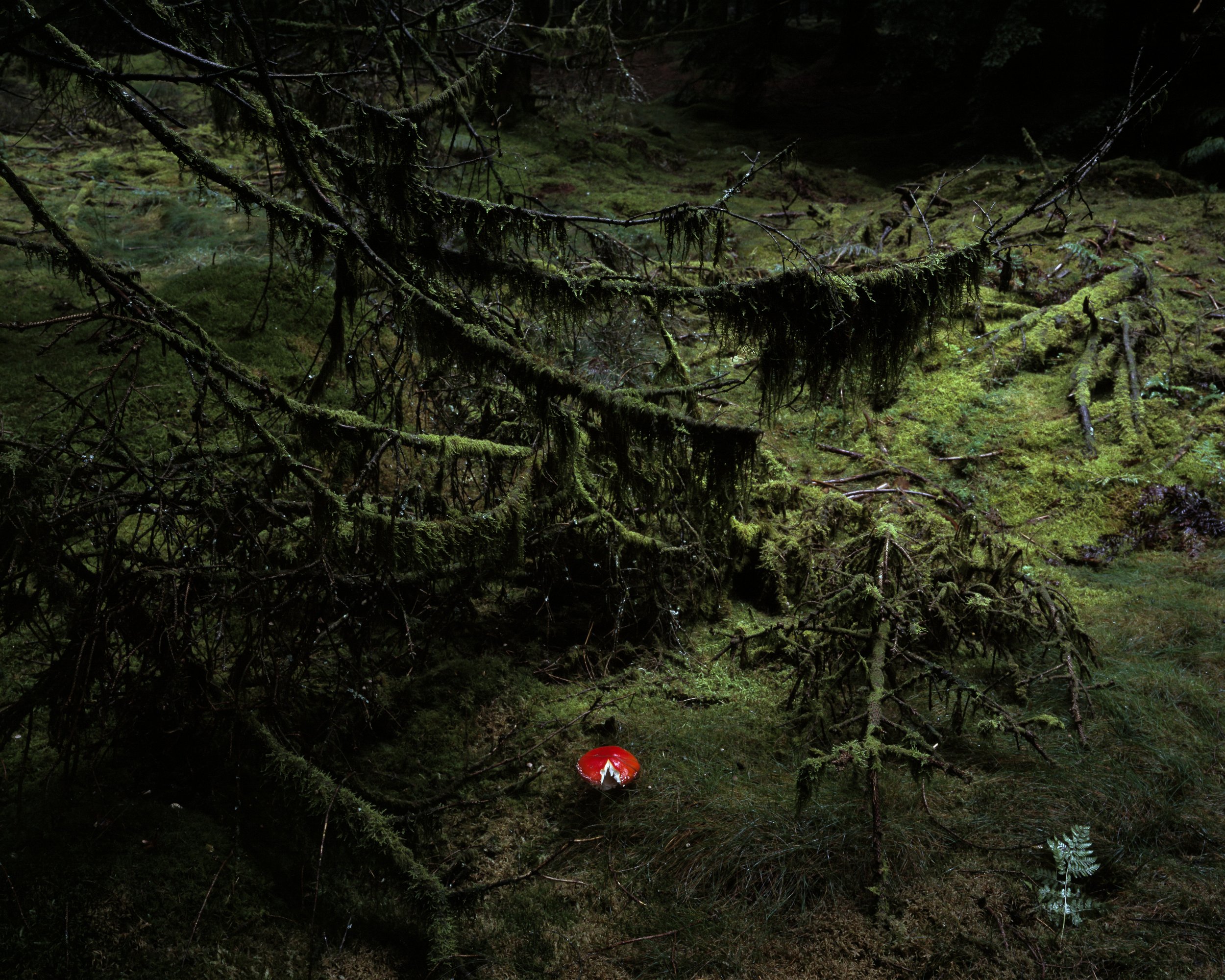Interview: Jesse Alexander on his practice and “The Silent Land”
How did you begin this project?
I didn’t set out to make a body of work about mental health, or suicide, or to make a long-term study of a particular place. But I’ve known Stockhill Wood (Somerset, England) all my life, having been taken there by my mother and grandparents when I was young, and in more recent years I would go there with my own kids and my cousin and her children. In the autumn of 2016 a local man, who for the sake of privacy and respect I refer to as SR, took his own life in the woods. I didn’t actually know him but my cousins did and I had some sense of the impact his death had on the community, and I also had some understanding of the circumstances that led to him choosing to commit suicide. There were overlaps with my own personal situation, which is why I was particularly affected by what happened. But more broadly felt, I think, was a negative feeling about the woods: we (my cousins and I) didn’t really feel comfortable taking our kids there to walk and play as we had previously. So, in the beginning, the camera was part license and part ‘security blanket’ to allow me to reconnect and, I suppose, reclaim the place that had a lot of good memories. It was quite a while before I thought I was doing a ‘project’ as such, let alone a photobook.
How does mental health or wellness factor in your work?
My own mental health and wellbeing was quite poor when starting the work and quite a lot of the images reflect this. All photographs are an autobiographical document of the maker (albeit most are limited in how much information they disclose) and much of the imagery isn’t very subtle in expressing my feelings at the time.
But I hope that the project draws greater attention to the endemic mental health crisis, which can lead to suicide – the most common cause of death for a man of my age – and that took the life of SR. I would like the work to be considered as a kind of elegy to people like him.
What is your process like?
I never set out with a shooting method as such: the woods are pretty small and it’s safe to wander about without the risk of getting lost. I suppose I just ‘followed my nose’ for the most part in terms of where I walked. There was nothing systematic going on, but I think I covered the woods pretty comprehensively in the three or four years of making work there.
I don’t believe in the supernatural, but for me there is a kind of magic in photography. So often (not just for this project) I might gravitate towards somewhere I think is going to offer an interesting subject or viewpoint, and when I get there I’m disappointed with what I find. But sometimes when I move on from there (or when I’m on my way to that point) something else far more interesting and unexpected presents itself. Maybe you just make your luck by taking opportunities?
People asked about whether I ever photographed the exact site of SR’s suicide. I didn’t and I don’t know whereabouts in the woods it happened. There would have been something too voyeuristic in that. Although I may of course have inadvertently photographed it, I hope that the absence of an image of the exact spot takes viewers away from the specificity of SR’s suicide, allowing the work to address this topic more broadly. I hope too that this prohibits the morbid or macabre fascination many respond to the news of a suicide with: people frequently want to know ‘how’ someone killed themselves, before asking ‘why’ or what led them to that choice.
I shot everything on a 6x7 rangefinder camera, mostly on slide film, and I work pretty economically, so it was frequently more than a month before reviewing what I had shot. Having that kind of time between shooting and reflecting on the results is quite important as it provides a lot of critical distance, and just gives you time to think about what you’re doing. Repeatedly photographing certain spots happened quite a lot: some parts of the woods just seemed to resonate more acutely. But often that would require waiting for another year to re-shoot if I’d not quite managed to capture the climate or the flora as I’d first wanted.
Was the process of creating this project helpful for dealing with the emotion you’re describing in your images?
I hope that the photographs speak about a range of emotions. And I hope, in the project’s entirety, I have conveyed an authentic sense of the wood’s topography and how it appears across the range of seasons. Certainly, the process was ultimately more substantial for me than the final output. The project was a significant part of managing circumstantial depression by visualizing my feelings, but also just getting out of the house, driving a few miles to the woods, and being there for a couple of hours or so – even if I didn’t shoot a single frame – almost always improved my state of mind.
In the forest I would, and continue to, think about what happened to SR. I had suicidal thoughts throughout some of the timeframe of the project and in the years before. I suppose SR’s suicide was something of a wake up to the reality of that and the terrible damage that it can do. I suppose being in the woods reminded me that my situation and my health wasn’t as bad as so many others. I hope that the sequence and rhythm of the images in the book (much is which is owed to Victoria Forrest’s excellent design) reflects the journey from an emotionally dark place to a brighter one, including even darker moments than at the beginning and, occasionally, uncomfortably joyous ones along the way. Those woods were really important to SR: I don’t think that my pictures can come anywhere near to expressing what he must have felt, but I’d hope he would think I’ve done justice to the place.
What is your relationship to photography?
I’m extremely grateful for my career with photography, which I fell in love with in my late teens. Nowadays I spend more time talking to students about photographs or writing about the subject than taking pictures for myself or for clients. But all of these activities are interrelated and important for a healthy, progressive perspective on the medium. But like any long-term relationship it has its ups and downs: I clearly don’t love all photographs nor approve of how everyone and every institution applies the medium. I’m critical of photography and I’m in a hugely privileged position to encourage others to challenge how photographs are used.
Has the pandemic shifted the way your approach your work and/or photography at all?
I was pretty much ready to stop making more pictures at the wood and had begun discussions about resolving the project when the pandemic descended. For the first lockdown I wasn’t legally allowed to drive to the wood for ‘exercise’, but with the other pressures there wasn’t really the time. But a couple of pictures from April 2020 are in the final edit.
I have no time for ‘destination’ landscape photography. I’ve always advocated photo projects that are based on the maker’s doorstep. There are often overlooked stories right there and they are logistically less problematic and less likely derail. They have a smaller environmental impact too. The pandemic made nature photographers out of so many people, which was a wonderful side-effect of the lockdown. Maybe there was a naivety to this, and maybe people were taking the same kinds of pictures of the same subjects, but so what! I think it encouraged awareness of people’s immediate environments and what’s in them, and I believe photography can potentially play a key role in addressing the climate and ecological emergencies. Increasing our resilience, our mental health and wellbeing, is of course going to be a huge part of surviving these crises and better relationships with photography can help with that.
Thank you so much to Jesse Alexander for taking the time to speak with Too Tired Project. You can explore more of his work on his website.









